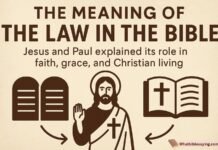The Bible is filled with fascinating stories that captivate the imagination and inspire the soul. Among these stories, there are moments where animals play unique roles, sometimes even speaking. This raises intriguing questions: Did animals talk in the Bible? Why did these events occur? What do they signify? In this article, we will explore these questions and more, delving into the biblical narratives where animals are given a voice and understanding their significance.
What Does the Bible Say About Animals Talking?
The Bible recounts several instances where animals are depicted as speaking. These moments are not just whimsical tales but carry deep spiritual meanings and lessons.
One of the most famous instances is found in the story of Balaam’s donkey. Balaam, a prophet, was on his way to curse the Israelites when his donkey suddenly spoke to him. The Bible narrates this event in Numbers 22:28-30:
“Then the LORD opened the donkey’s mouth, and it said to Balaam, ‘What have I done to you to make you beat me these three times?’ Balaam answered the donkey, ‘You have made a fool of me! If only I had a sword in my hand, I would kill you right now.’ The donkey said to Balaam, ‘Am I not your own donkey, which you have always ridden, to this day? Have I been in the habit of doing this to you?’ ‘No,’ he said.”
This story highlights several key points: the intervention of God in human affairs, the importance of listening to divine messages, and the humility to recognize when we are wrong.
Why Did the Donkey Talk in the Bible?
The talking donkey in Balaam’s story serves a specific purpose. It was a divine intervention to prevent Balaam from cursing the Israelites, highlighting God’s protective nature over His chosen people. The event also underscores the idea that God can use any means, even a donkey, to convey His message and correct His followers.
Did the Animals Talk When Jesus Was Born?
There are no biblical accounts of animals speaking at the birth of Jesus. The nativity story focuses on the human participants: Mary, Joseph, the shepherds, and the wise men. While animals are often depicted in nativity scenes, their role is passive, serving as witnesses to the miraculous birth rather than active participants with speaking roles.
Do Snakes Talk in the Bible?
Yes, the Bible does mention a talking serpent in the Garden of Eden. In Genesis 3:1-5, the serpent speaks to Eve, tempting her to eat the forbidden fruit:
“Now the serpent was more crafty than any of the wild animals the LORD God had made. He said to the woman, ‘Did God really say, “You must not eat from any tree in the garden”?’ The woman said to the serpent, ‘We may eat fruit from the trees in the garden, but God did say, “You must not eat fruit from the tree that is in the middle of the garden, and you must not touch it, or you will die.”‘ ‘You will not certainly die,’ the serpent said to the woman. ‘For God knows that when you eat from it your eyes will be opened, and you will be like God, knowing good and evil.'”
This passage is significant as it sets the stage for the fall of humanity. The serpent’s speech is not just a conversation but a catalyst for disobedience and sin.
Did Animals Talk in the Garden of Eden?
Apart from the serpent, there are no other accounts of talking animals in the Garden of Eden. The talking serpent is unique and is often interpreted symbolically, representing Satan’s deceit and the introduction of sin into the world.
Did Animals Used to Talk?
The Bible does not suggest that animals commonly talked in the past. The instances where animals do speak are exceptional and serve specific divine purposes. These occurrences are meant to convey deeper spiritual truths rather than suggest that animal speech was a regular phenomenon.
How Many Animals Talk in the Bible?
There are only a few instances of talking animals in the Bible. The most notable are Balaam’s donkey and the serpent in the Garden of Eden. These instances are rare and serve significant narrative and theological purposes, highlighting God’s intervention and the presence of evil, respectively.
What Order Should I Read The Bible In?
Reading the Bible can be an enriching experience, and there are various approaches to help you get the most out of it. Here are a few methods to consider:
Chronological Order
Reading the Bible in the order events occurred can provide a historical perspective and help you understand the narrative flow. This method often involves reading Genesis, then Job, followed by Exodus, and so on. Various resources and chronological Bibles are available to guide you through this process.
Thematic Approach
Focusing on specific themes, such as love, faith, or prophecy, can deepen your understanding of these topics. This approach allows you to explore how different books of the Bible address similar issues.
Book-by-Book
Reading one book at a time, starting with the New Testament or the Gospels (Matthew, Mark, Luke, and John), can provide a comprehensive understanding of each book’s message. This method is straightforward and can be especially helpful for beginners.
Devotional Reading
Incorporating the Bible into daily devotionals allows for reflection and application of biblical principles in your life. Many devotional guides pair scripture readings with reflections and prayers, making it a practical way to engage with the Bible daily.
Conclusion
The Bible’s accounts of talking animals are rare and filled with profound lessons. From Balaam’s donkey to the serpent in the Garden of Eden, these stories highlight divine intervention, the consequences of sin, and the importance of heeding God’s messages.
As you explore these fascinating narratives, remember that the Bible offers various ways to engage with its teachings. Whether you choose to read it chronologically, thematically, or devotionally, the key is to approach it with an open heart and mind, seeking to understand and apply its wisdom in your life.











